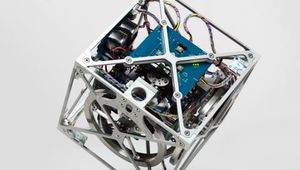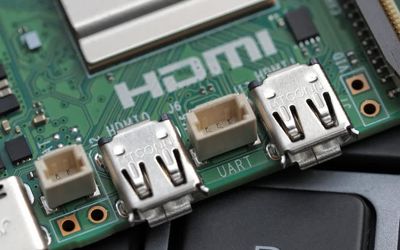STMicroelectronics X-NUCLEO-OUT11A1 Expansion Board for STM32 Development Boards
An industrial digital output expansion board for STM32 Nucleo development boards.
Technical Specifications
| Product Type | Expansion board |
| Input Voltage | 9.2 to 36 |
| Function | Digital Output expansion |
| Protection Features | Under voltage lockout, overload, overtemperature, and loss of ground protection |
| Applications | Industrial Development board evaluation |
| Operational Modes | Direct and Synchronous |
| Compatibility | STM32 Microcontroller family |
| Compliance | RoHS and China RoHS Compliant, CE Certified |
Overview
It’s designed explicitly for STM32 Development boards allowing developers to expand the digital output range for testing and evaluating STM32 microcontrollers. Thanks to its ability to drive high-power output in various applications, it is primarily designed for industrial applications. Hence, it features power handling modules like the IGBT and gate driver circuits. With advanced protection features like galvanic isolation and temperature protection, it can drive up to 0.7A industrial loads connected to its GPIO pins.
Seamless Integration with External Microcontrollers
The STMicroelectronics X-NUCLEO-OUT11A1 expansion board is meant for interfacing with the STM32 development boards. It features an Arduino R3 connector head making it compatible with the Arduino development environment.
A seamless integration with the ST32 boards allows developers to conveniently expand the GPIO pins for various testing and evaluation-based applications. It expands the Nucleo platform, allowing users to connect more input and output modules.
Eventually, a single expansion board can improve the input handling capabilities allowing for cost-effective industrial applications.
Moreover, the X-NUCLEO-OUT11A1 expansion board comes with full software support. So, users can work with predefined libraries and ready-to-use examples just like the Arduino development boards and software environment. As a result, it can fast pace the development process involving STM32 Nucleo development boards and devices from the same ecosystem.
The board also features distinctive LED lights that indicate specific board conditions and features. These lights include:
A Red LED to indicate overheating and communication error.
Green LED lights for indicating the output status of specific pins.
Yellow LED light that indicates the enable status for output signals.
The board also features multiple connectors that can be manually adjusted to configure various input and output configurations during development.
Power Management and Protection Features
The X-NUCLEO-OUT11A1 expansion board provides optimum power handling capabilities as an industrial-grade expansion board. It’s primarily designed to provide easy access to high-power applications in the industrial sector, so it features a powerful STGIPS20C60 IGBT power module. This module can handle high voltage and current. Along with the IGBT module, the board features a gate driver in a single circuitry, simplifying the IGBT module control.
Extensive protection features include overcurrent protection, over-temperature protection, loss of ground protection, an Undervoltage lockout, fast decay system for inductive loads, and an embedded 2kVRMS. Moreover, It features a current sensing module to monitor load for precise feedback control. On top of that, all output channels are entirely electrically isolated, protecting the expansion board and microcontrollers from any damage from the load equipment. Moreover, the isolation ensures each output channel can independently drive various loads.
The board can operate in two modes, i.e., the Direct Mode and Synchronous mode. The developer can configure the J1 and J2 connectors to select the operation mode. Due to its versatile protective feature set and compatibility with the Arduino development environment, the X-NUCLEO-OUT11A1 expansion board provides a convenient option for testing and deployment in industrial applications that involve high-current and voltage operations.
Where to find it

Mouser Electronics
Mouser Electronics is a worldwide leading authorized distributor of semiconductors and electronic components.








